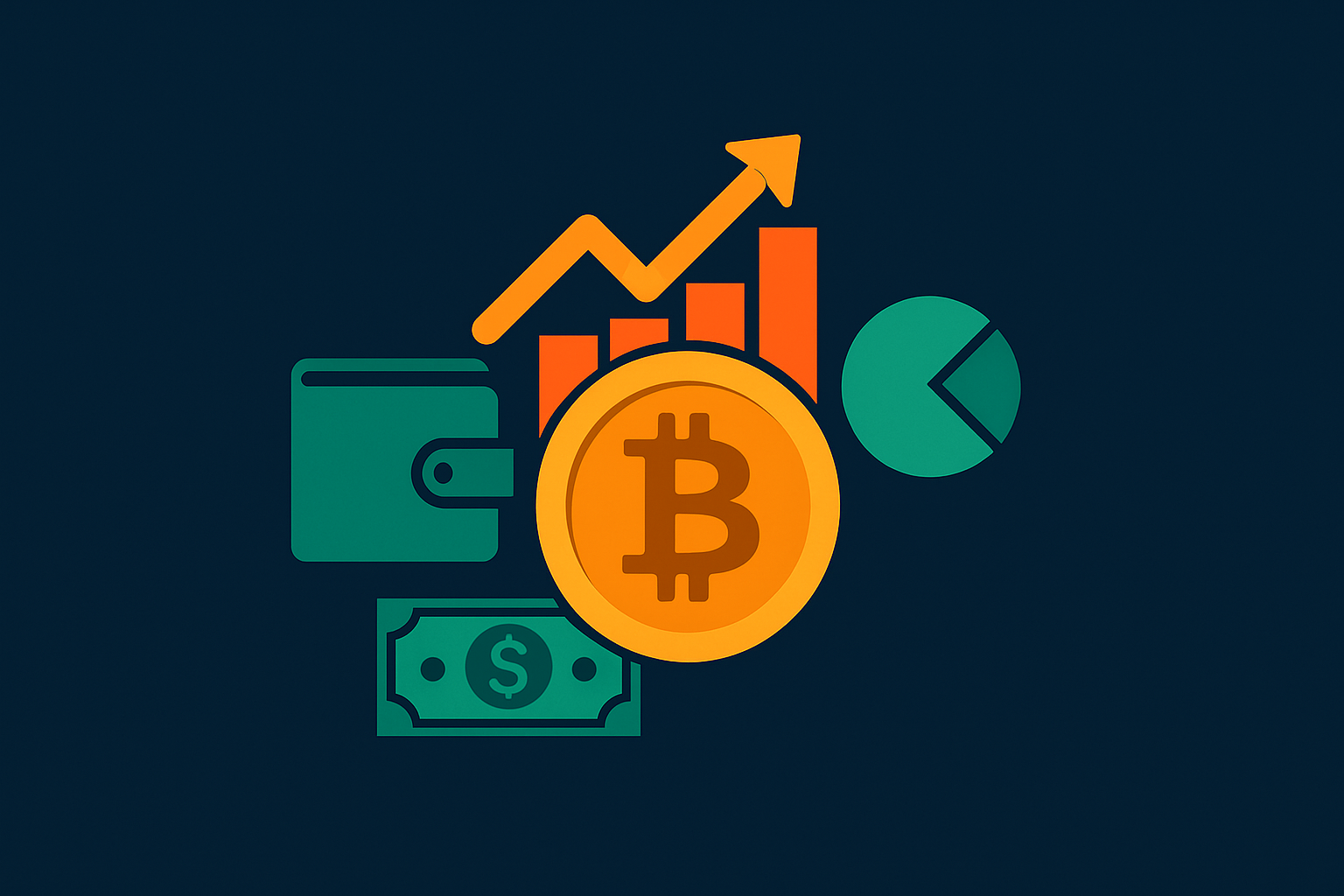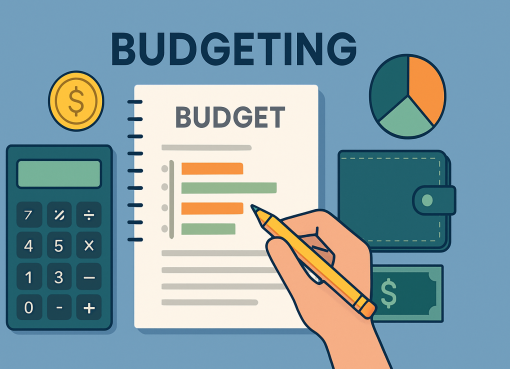Introduction
In 2025, the financial landscape continues to evolve, and cryptocurrency is no longer just a fringe asset discussed by tech enthusiasts or speculative investors. It has firmly entered the mainstream. Institutional adoption, regulatory frameworks, and widespread public engagement have made it increasingly common for individuals to consider digital assets as a part of their personal finance strategy. From retirement planning to monthly budgeting, crypto is carving out space in the wallets—and minds—of everyday investors.
As economic uncertainty persists globally and fiat currencies face challenges from inflation, digital currencies are becoming recognized for their potential to preserve value, hedge against market instability, and provide opportunities for high-yield growth through decentralized finance platforms. However, the integration of crypto into personal financial planning is not without its complexities and risks. A disciplined, informed approach is crucial.
Changing Perspectives Among Financial Advisors
Financial advisors in 2025 are far more open to discussing cryptocurrency as a viable asset class than they were just a few years ago. Many now suggest a small allocation of 2% to 5% in crypto assets within diversified portfolios, particularly for younger clients with a higher risk tolerance. This shift has been fueled by broader acceptance of cryptocurrencies such as Bitcoin and Ethereum, which have shown relative resilience despite their inherent volatility.
The adoption of Bitcoin ETFs in various regions and improved crypto custody solutions have given financial professionals more tools to safely manage crypto exposure for their clients. Advisors are increasingly trained to evaluate blockchain-based assets and DeFi opportunities alongside traditional investments like stocks, bonds, and mutual funds.
Moreover, regulatory clarity provided by financial oversight bodies has allowed financial planners to feel more confident about the compliance and legality of suggesting crypto as part of wealth-building strategies. Tools like tax-reporting software and decentralized tracking dashboards are making it easier than ever to incorporate crypto tracking into traditional accounting systems.
Understanding Risk And Volatility
Despite these advances, the inherent volatility of cryptocurrencies remains a critical factor in financial planning. Bitcoin, while relatively stable compared to smaller altcoins, still experiences significant price swings that can be unsettling to traditional investors. Ethereum, with its dynamic utility and widespread use in smart contracts and DeFi, also undergoes frequent market adjustments influenced by protocol upgrades, gas fee shifts, and ecosystem news.
New investors must understand that unlike traditional equities, cryptocurrencies can drop 20% in a day or double in price within a week. Because of this, they are best suited for the growth component of a diversified portfolio, not for the cash or income portion. Risk tolerance assessments remain essential before including crypto in financial plans.
The Role Of Stablecoins And DeFi In Daily Budgeting
Beyond investments, stablecoins like USDC and USDT are now being integrated into everyday budgeting tools. These blockchain-based currencies, pegged to the U.S. dollar or other fiat currencies, allow users to conduct cross-border transactions, save, and even earn yield through DeFi platforms with minimal volatility.
Gen Z, in particular, has embraced this model. Many young professionals now use stablecoins for day-to-day expenses, leveraging mobile wallets that integrate with traditional debit cards. Apps that combine crypto savings, DeFi lending, and fiat bridges are gaining popularity, making personal finance more flexible, mobile, and independent of traditional banking systems.
Tax Planning And Regulatory Considerations
With increased crypto adoption comes the need for meticulous tax planning. In 2025, tax authorities in most developed nations now require detailed reporting of crypto gains and losses, including staking income, airdrops, and NFT transactions. Failing to report accurately can lead to penalties, making it essential for crypto investors to use tax management tools or consult tax professionals familiar with digital assets.
Additionally, governments are cracking down on illicit use of cryptocurrencies. Know Your Customer (KYC) and Anti-Money Laundering (AML) protocols are now standard across reputable exchanges. Users looking to include crypto in their long-term plans must ensure their platforms are compliant to avoid future complications.
Long-Term Investment Planning And Retirement
Long-term strategies for crypto in personal finance are evolving rapidly. While most traditional retirement accounts like IRAs and 401(k)s still operate in fiat currencies, new custodians now offer crypto-backed retirement products. These allow individuals to allocate a portion of their retirement savings into Bitcoin, Ethereum, and other major assets, often through regulated vehicles.
Self-directed IRAs with crypto exposure are also gaining momentum. They enable control over asset allocation and open access to high-performing altcoins and DeFi protocols. However, they also require a stronger grasp of market mechanics, security practices, and portfolio discipline. Those planning for retirement are advised to approach crypto allocations conservatively. Bitcoin, with its fixed supply and growing institutional adoption, is commonly recommended as a long-term store of value.
Security And Custody: Protecting Your Digital Wealth
One of the core concerns in integrating crypto into personal finance is secure storage. As of 2025, a wide array of solutions exists—from hardware wallets like Ledger and Trezor to insured custodial accounts on platforms such as Coinbase, Gemini, and Binance.
Best practices in crypto finance involve a combination of custodial and non-custodial solutions. While hot wallets offer convenience for active users, cold storage remains the gold standard for protecting long-term holdings. Multi-signature wallets and biometric authentication are also becoming more mainstream, reducing the risk of loss or theft.
Educational Empowerment And Financial Literacy
A successful integration of crypto into personal finance in 2025 requires education. Financial literacy programs are increasingly including crypto modules, especially in high schools, universities, and corporate training programs. Platforms like Binance Academy, Coinbase Learn, and DeFi-focused courses on Coursera are offering accessible, structured learning experiences for all age groups.
Understanding how blockchain works, what gives crypto its value, how wallets operate, and the mechanics of DeFi platforms are no longer optional—they’re essential skills for modern financial independence. The democratization of finance enabled by crypto technologies is empowering people to control their wealth, but it comes with a demand for greater responsibility and vigilance.
Final Thoughts
Crypto’s role in personal finance in 2025 is multi-dimensional. It’s not just an investment—it’s a tool for savings, budgeting, planning, and even identity in the modern digital economy. However, integrating it responsibly requires clarity of goals, risk awareness, and a willingness to continuously learn.
As governments formalize policies and market volatility continues, individuals must build flexible strategies that blend traditional wisdom with modern innovation. Whether allocating 3% to Bitcoin in a Roth IRA, using stablecoins for monthly savings, or exploring yield farming for supplemental income, each approach must be tailored to personal needs, financial objectives, and tolerance for risk. Crypto is no longer optional in the conversation around personal finance—it’s essential. But with that opportunity comes the need for discipline, structure, and insight.


